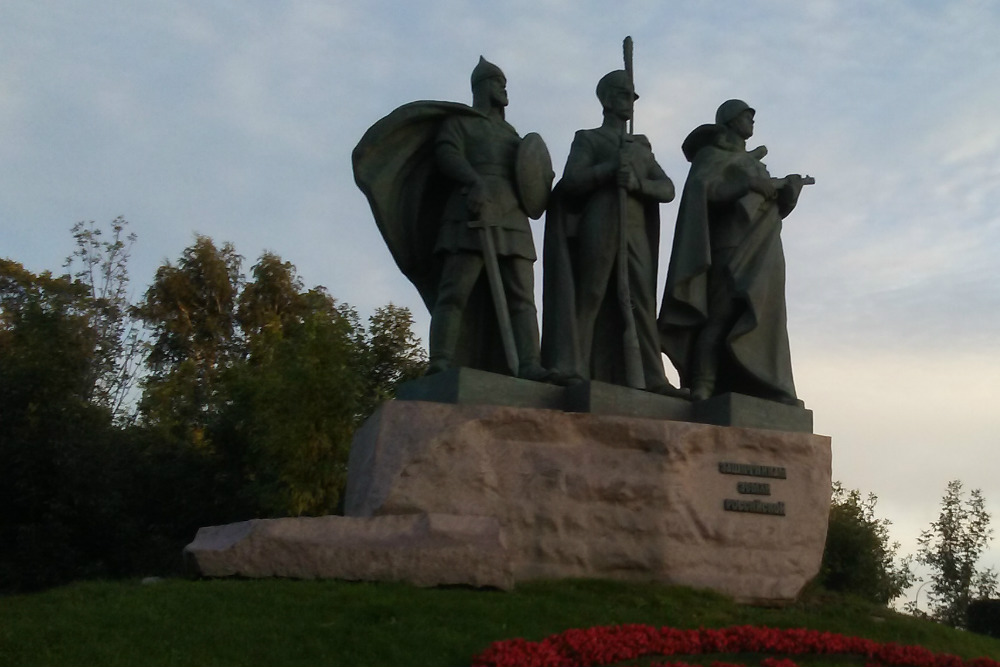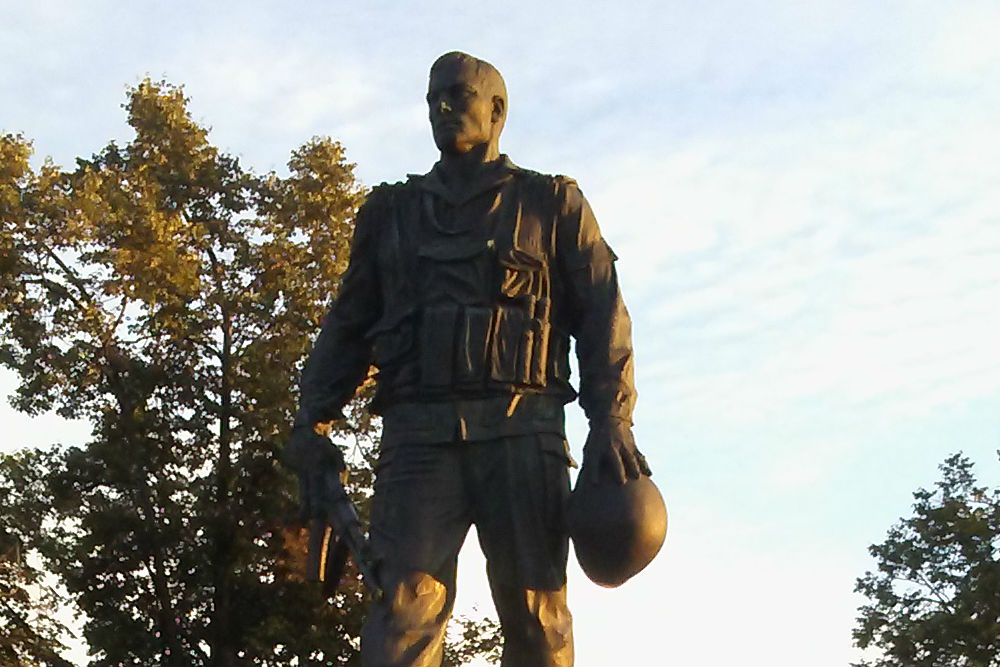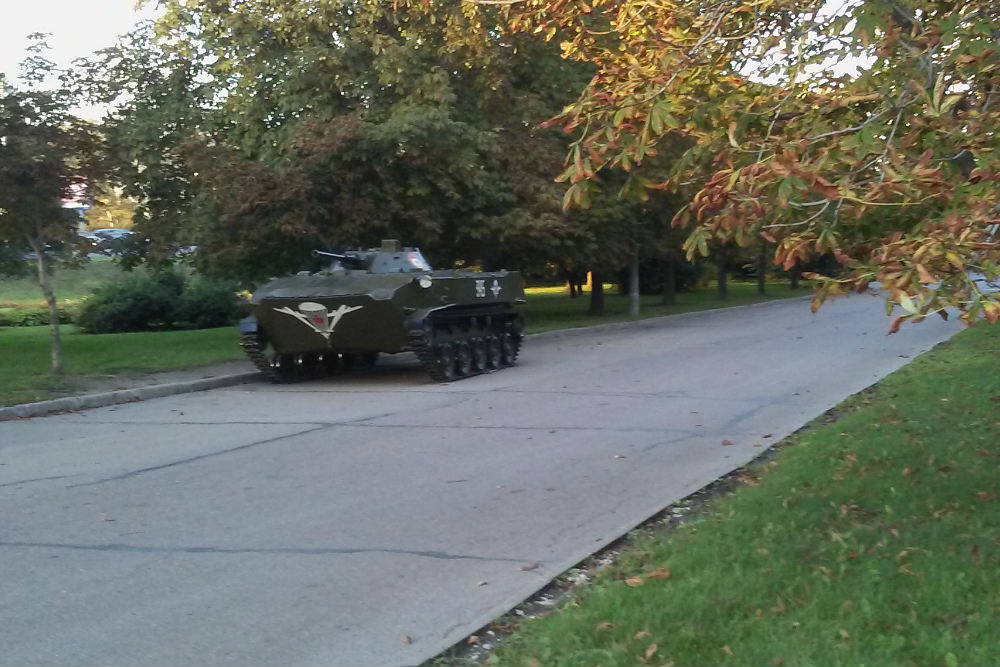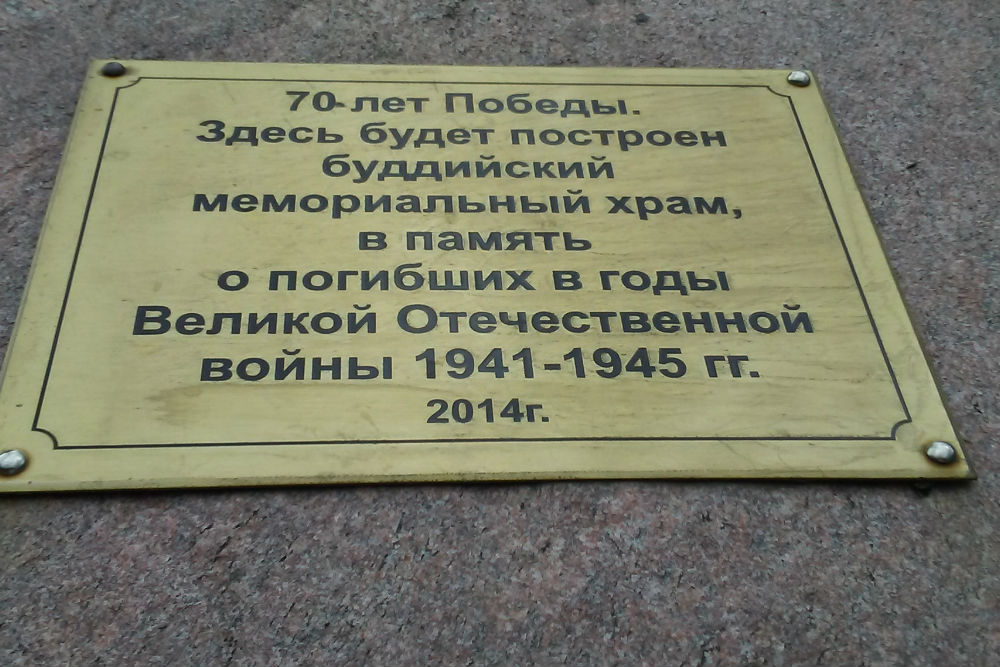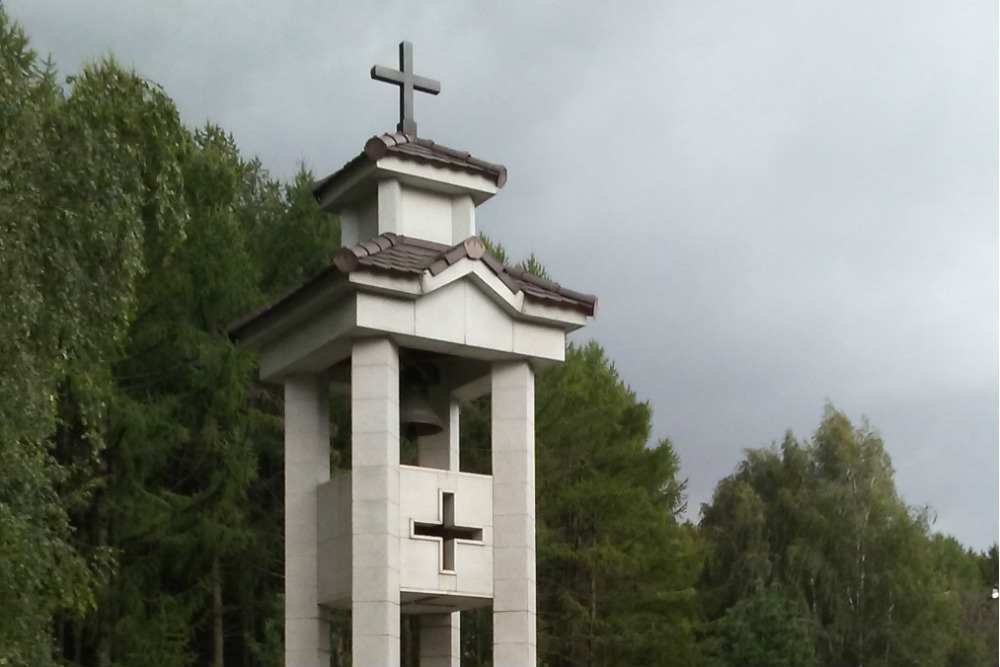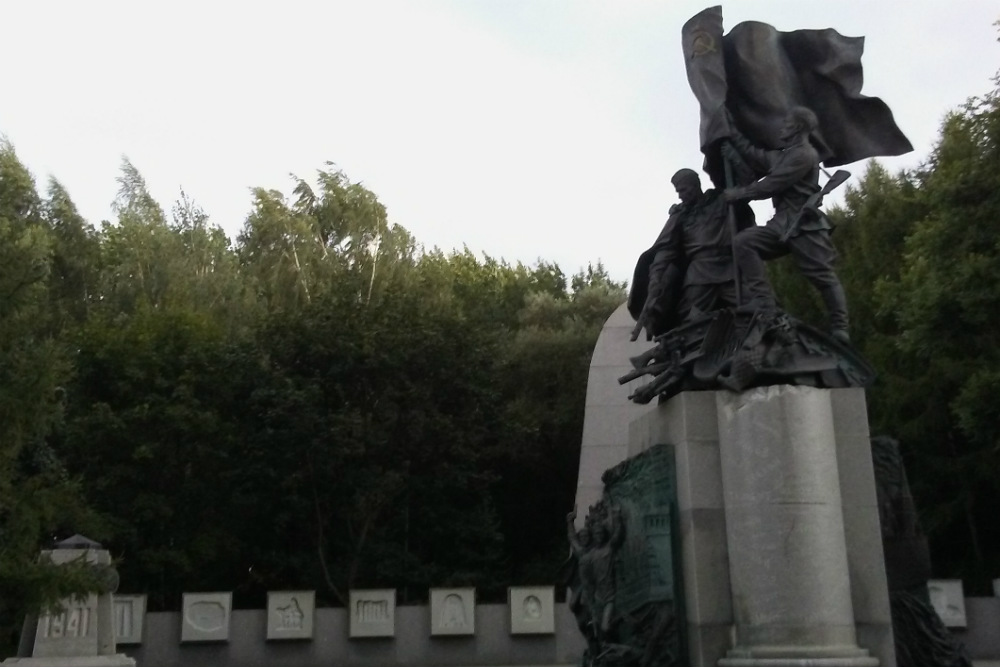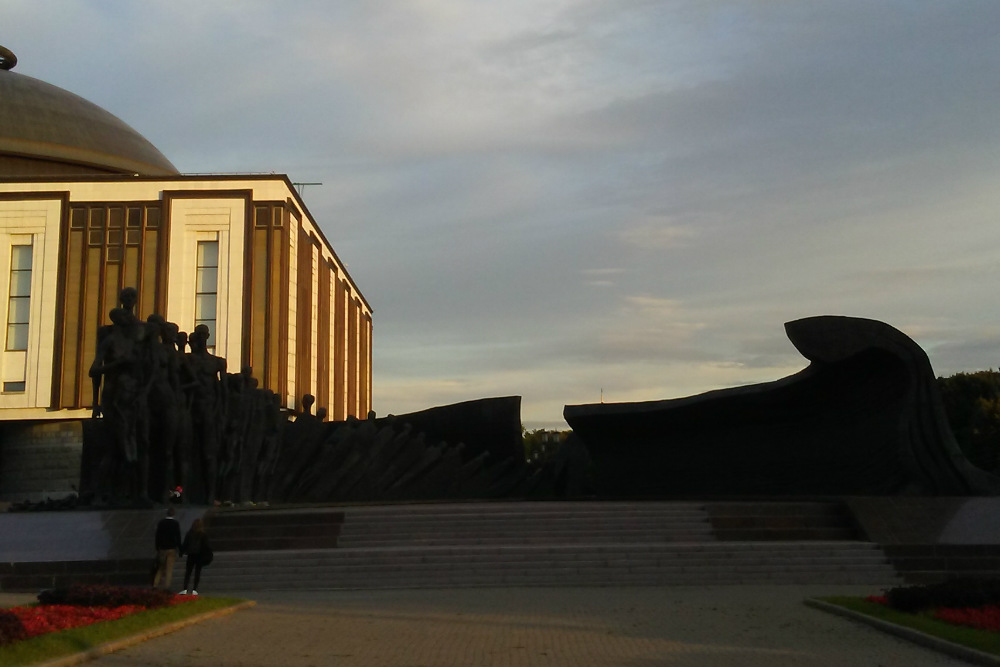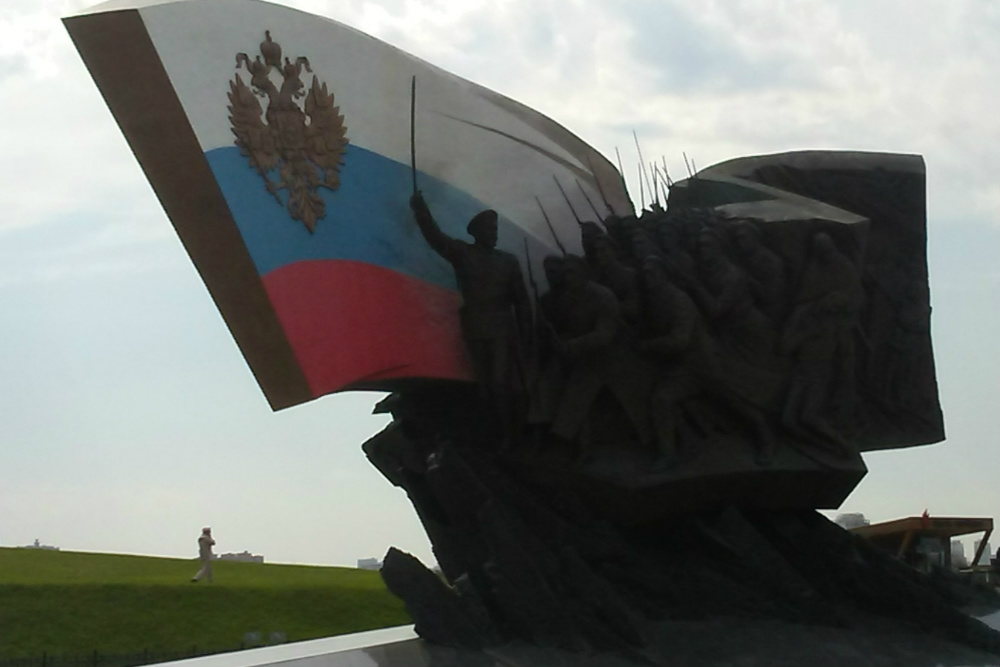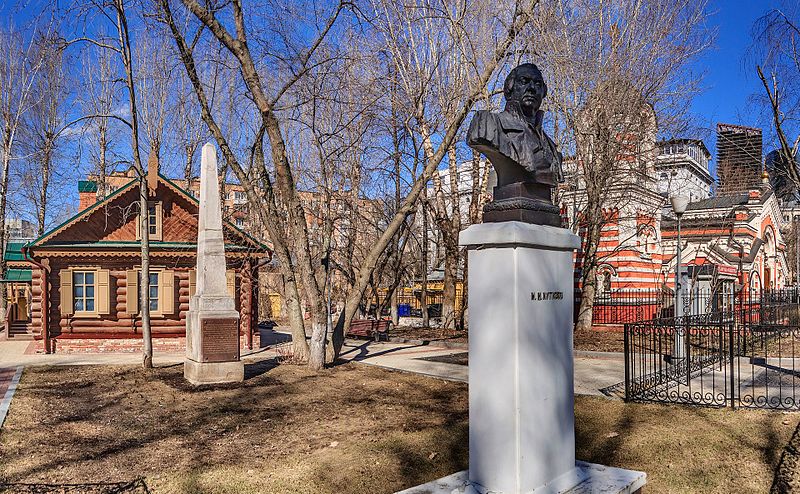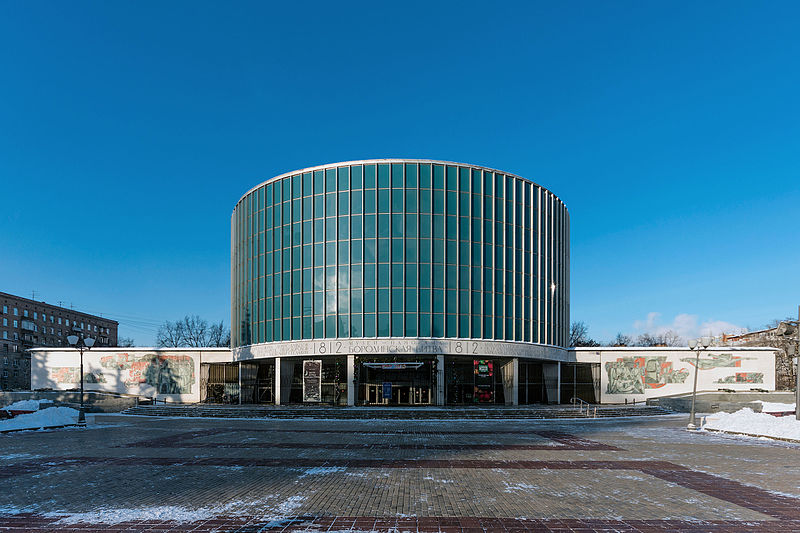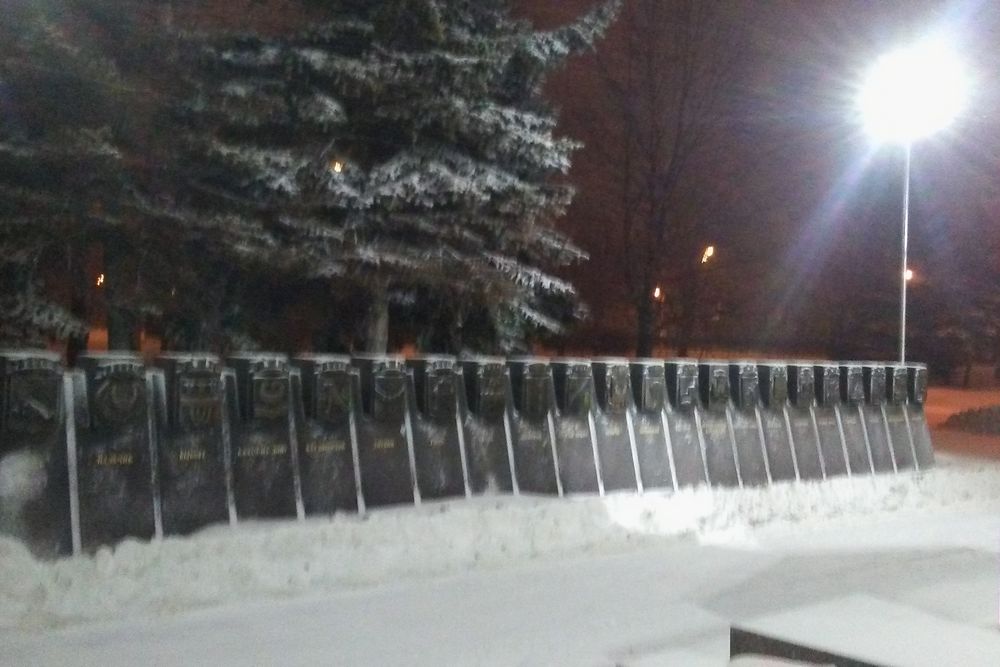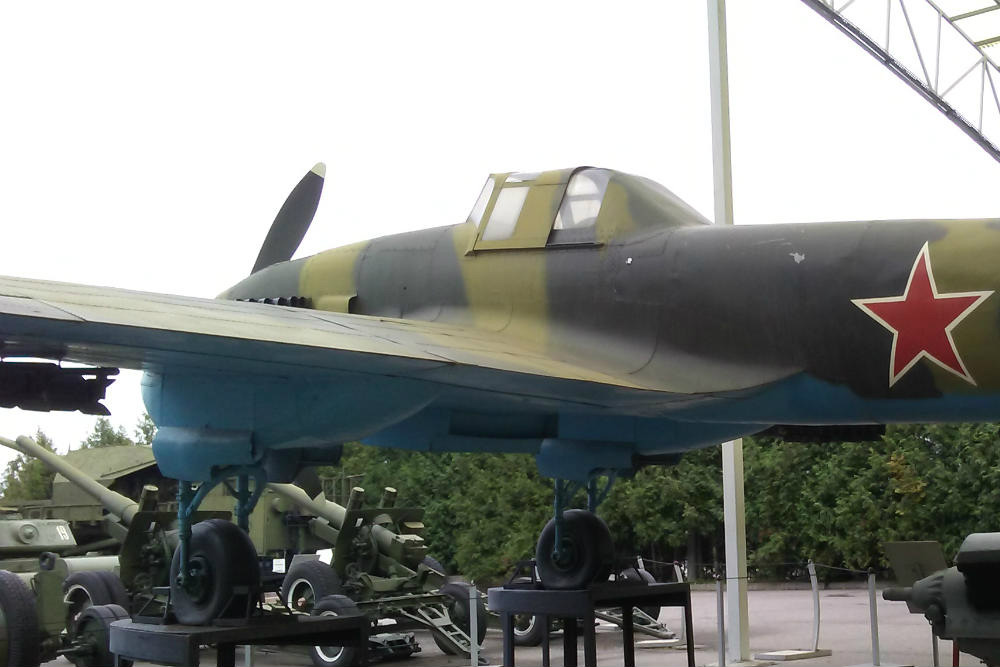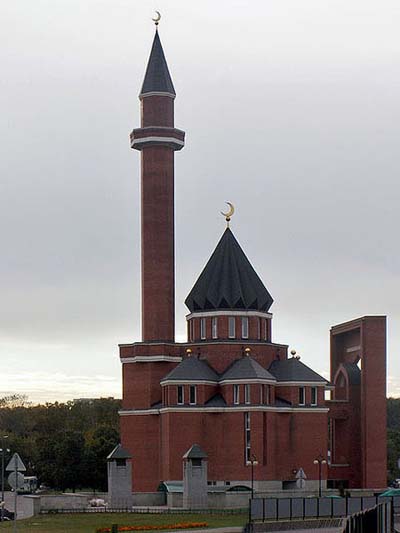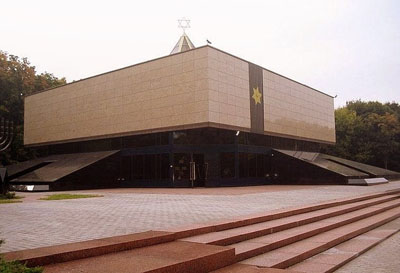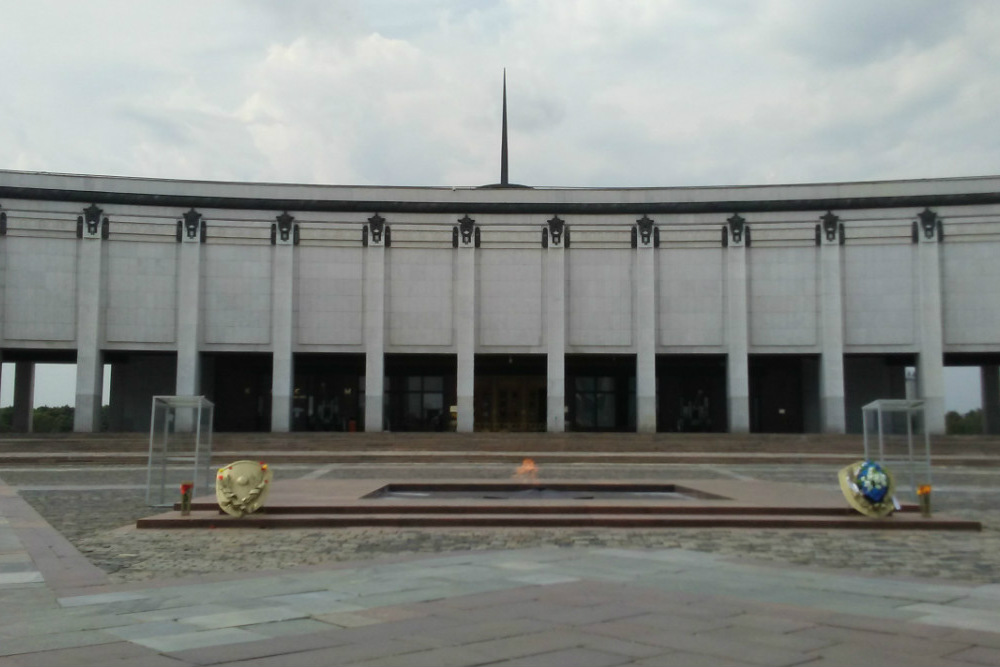A Guide to Moscow’s Victory Park
Moscow’s Victory Park is located directly on Poklonnaya Hill, one of the key mountaintops in the city and its history. At the epicenter is an obelisk with the statue of St. George cutting the throat of a nazi-covered snake. This vivid and bloody imagery is a small sample of the goal and purpose of the memorial park: to celebrate and commemorate the victories of the Russian people. The area, although mostly focused on commemorating the victory in the Great Patriotic War (as World War II is known in Russia and most of Eastern Europe), also commemorates the victory of 1812 over Napoleons French forces. Within the park grounds there are three museum-type exhibits, more than ten memorials, and four commemorative houses of worship all focused mainly on the Great Patriotic War. Outside the park in the adjacent streets there is also a museum, Arc de Triumph and monument to the victory in 1812. This article will guide you through each of these.
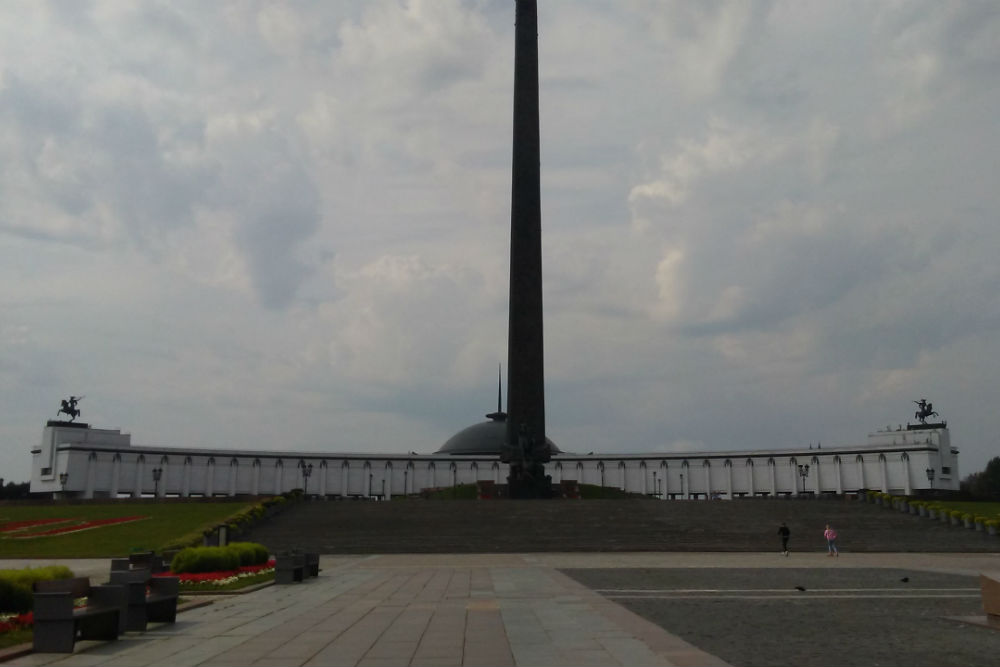
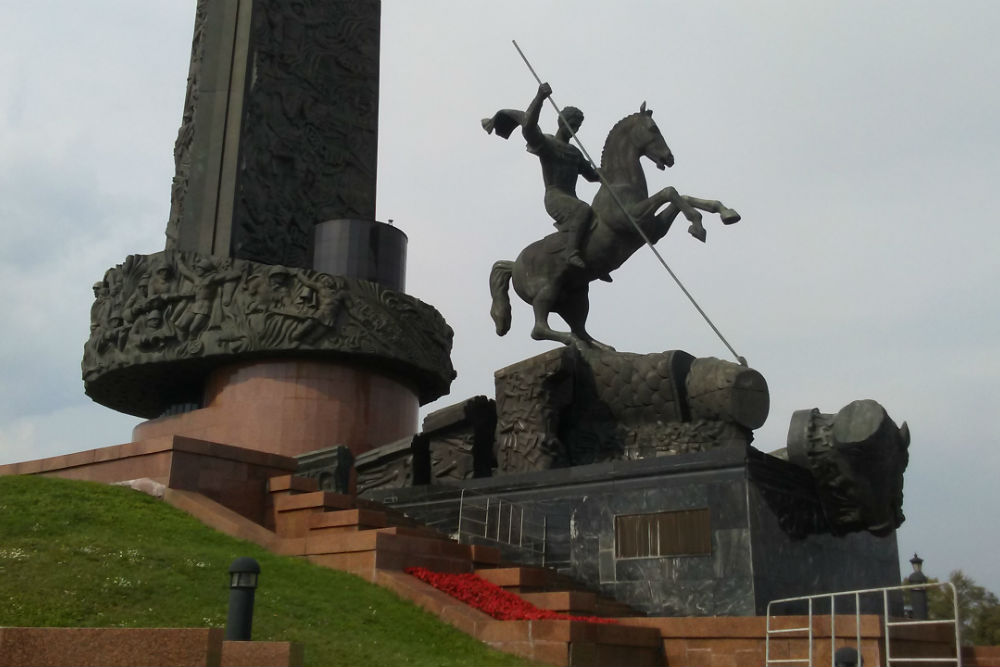
To begin, the best way to arrive is by metro. The park is located on its metro station namesake, Парк Победы (Victory Park) on the Dark Blue Line. As you walk out, take the exit towards “Poklonnaya Hill” and once you exit you will be looking straight towards the obelisk. Driving as well as taking the bus or a taxi are also viable options to arrive.
Moscow’s Victory Park is located directly on Poklonnaya Hill, one of the key mountaintops in the city and its history. At the epicenter is an obelisk with the statue of St. George cutting the throat of a nazi-covered snake. This vivid and bloody imagery is a small sample of the goal and purpose of the memorial park: to celebrate and commemorate the victories of the Russian people. The area, although mostly focused on commemorating the victory in the Great Patriotic War (as World War II is known in Russia and most of Eastern Europe), also commemorates the victory of 1812 over Napoleons French forces. Within the park grounds there are three museum-type exhibits, more than ten memorials, and four commemorative houses of worship all focused mainly on the Great Patriotic War. Outside the park in the adjacent streets there is also a museum, Arc de Triumph and monument to the victory in 1812. This article will guide you through each of these.


To begin, the best way to arrive is by metro. The park is located on its metro station namesake, Парк Победы (Victory Park) on the Dark Blue Line. As you walk out, take the exit towards “Poklonnaya Hill” and once you exit you will be looking straight towards the obelisk. Driving as well as taking the bus or a taxi are also viable options to arrive.
Part I: World War II Museums and Memorials
Once arriving by metro, we will begin the walk by going straight to the Memorial Obelisk standing tall. As you walk from the metro station towards the top of Poklonnaya Hill on the left-hand side you will see the World War I memorial. It is two-fold with a soldier’s statue on one side, and alongside it a sculptured photo of cavalry troops riding into battle (image 2).
Include a gallery of photos (figures 4-7):
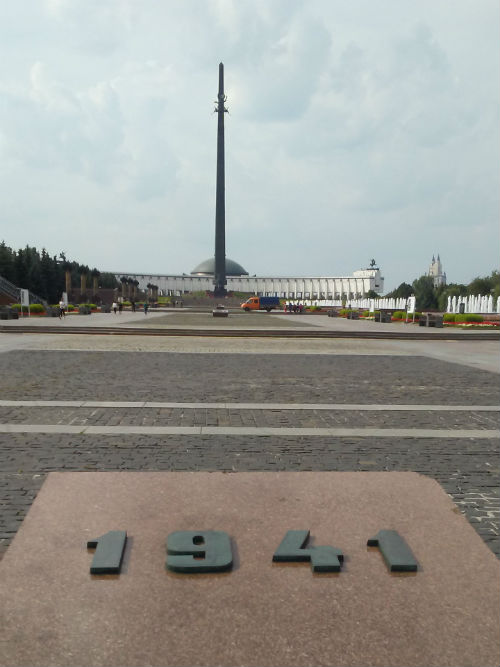
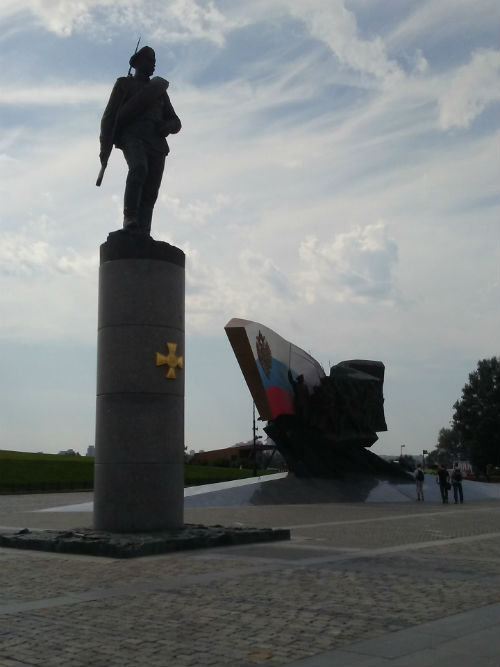
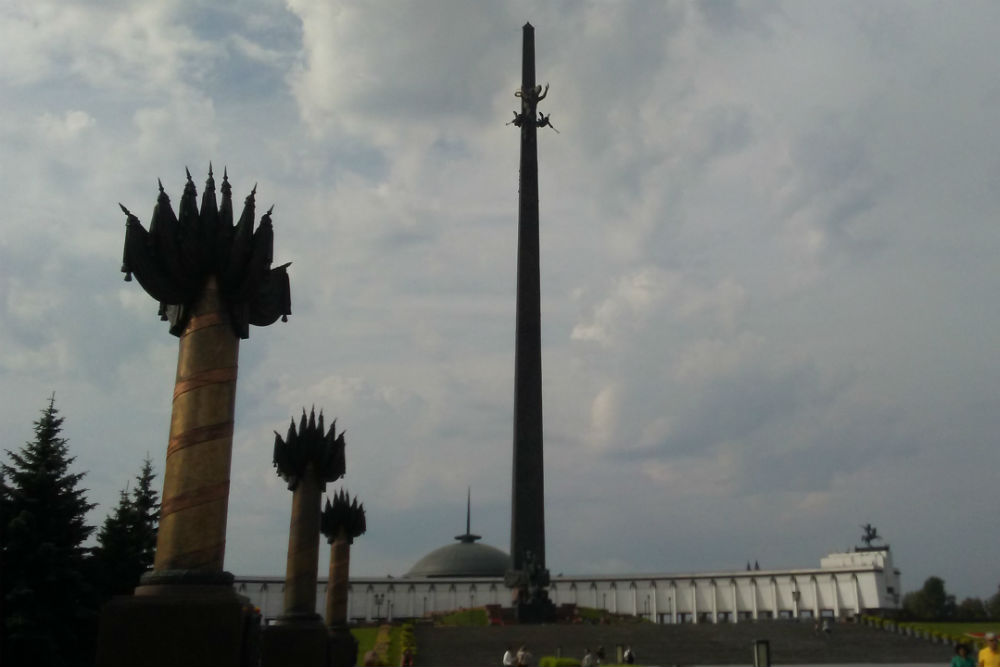
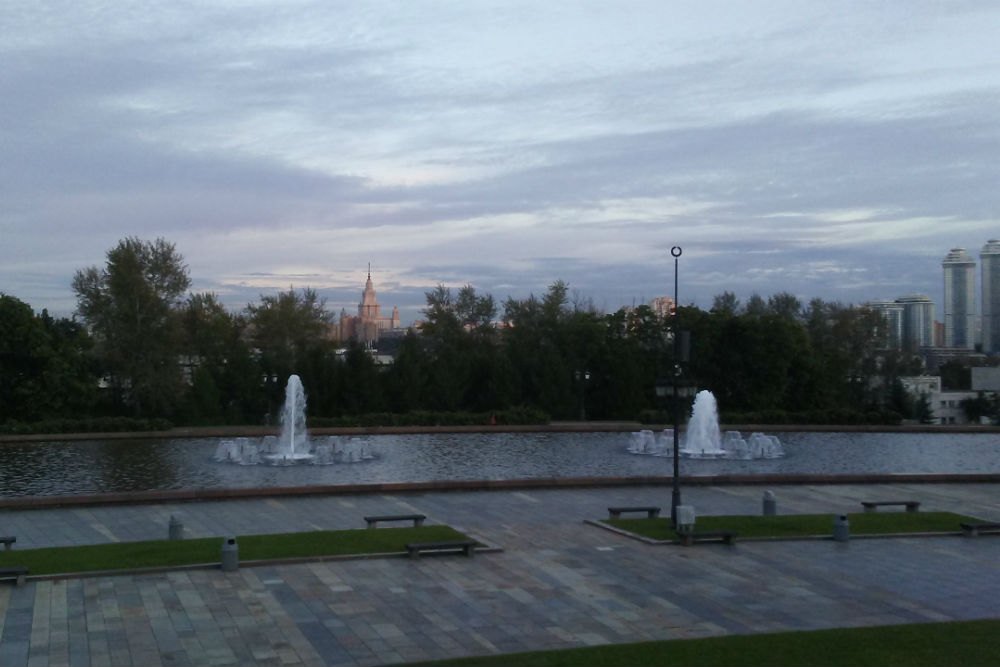
Once you continue past the First World War memorial begin walking up the steps. The walk up towards the obelisk follows the war period beginning in 1941 through 1945 symbolized by stones along the path and the fountains along the side (see Figure 4). On your left-hand side fifteen gold pillars stand strong, placed there in 2005 by President Putin. Each symbolizes different parts of the war effort in the Soviet Union (Figure 6). On your right-hand side, the landscape is filled with fountains (Figure 7).
On May 9, 1995 St. George’s statue prevailing over the evil snake was inaugurated as a Memorial to Victory. You should have reached it by now, if you have been walking along the main path with me. It is in the foreground of the imposing obelisk. The obelisk has inscriptions and drawings alongside it, including mainly the names of the main Soviet cities where the Great Patriotic War was fought. Usually, the stairs are open to walk up along the sides of St. George and admire the memorial.
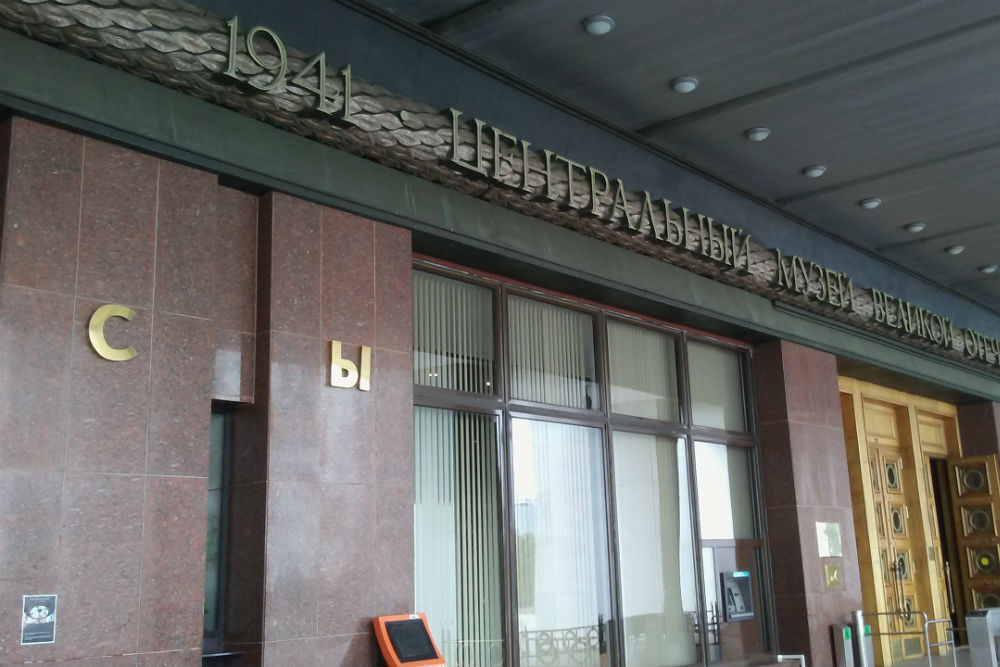
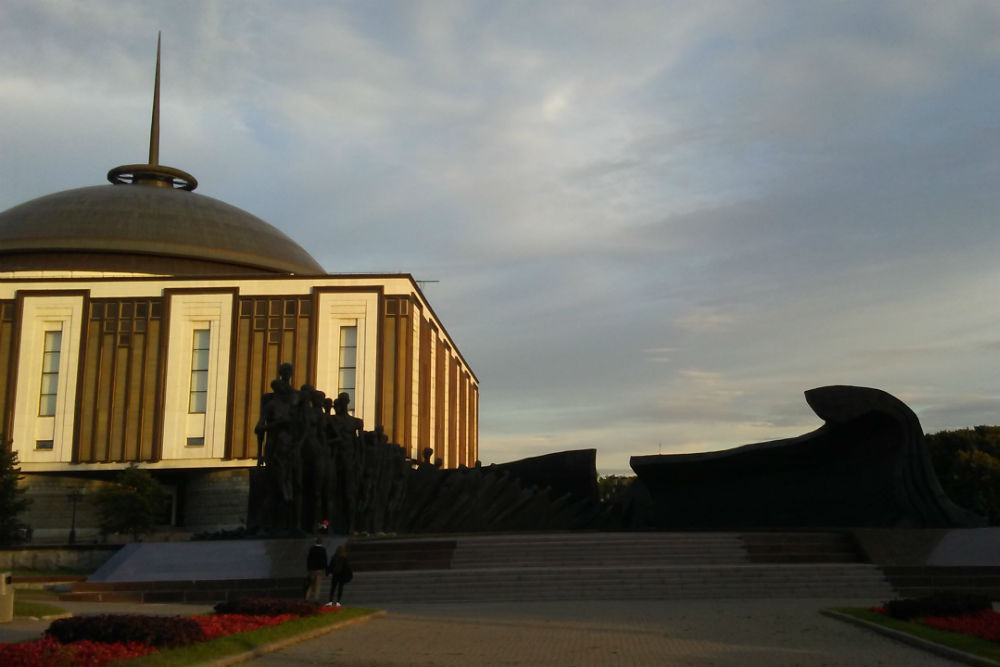
On the back side of the obelisk lies the Central Great Patriotic War Museum. It stands surrounding the memorial in a semi-circle of white columns. The entrance is located right behind the eternal flame. The museum tracks the story of the Soviet Union war against Hitler’s invading armies from 1941 till 1945. Their main exhibits are four panoramic dioramas, or 3-D art displays. It is a museum worth seeing if interested in the war from the Russian perspective.
The path we just took represents the main road and the key part of the memorial at Victory Park. Please enter the museum if you are interested in the topic. Next, we will turn to the right of the museum to the memorial "The tragedy of peoples." It stands as a semi-circle of people who stand completely naked. As you continue along the line they start falling on top of each other. It stands as a reminder of the horrors and crimes of the war.
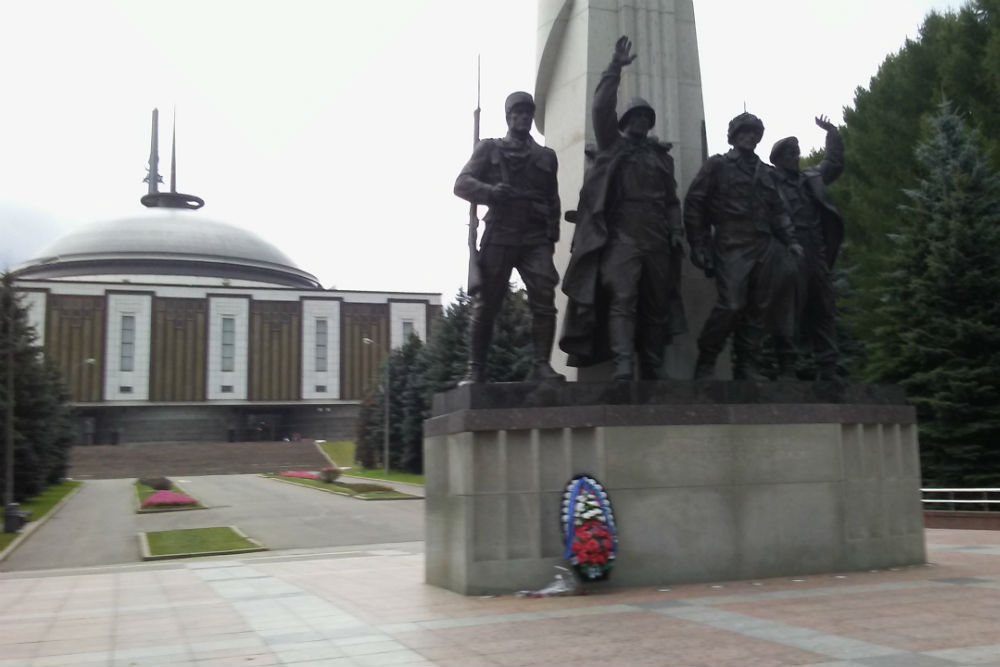
After this memorial, continue walking around the museum to the back side. Here is the Memorial to the anti-Hitler Coalition. The monument is of four soldiers, seemingly of different nationalities based on their weapons. Most likely there is a French, British, US, and Soviet soldier standing together.
IF limited on time, skip to the Open-Air Exhibit, you will find it by taking a left turn and continuing to the other side of the Great Patriotic War Museum. It is also located with a pin on a larger map.
Otherwise, lets continue walking away from the museum along the path. At the next intersection, turn left and you will run into a plaque and memorial reading: “In the struggle against Fascism, We stood Together.” It commemorates all the Soviet republics in their war against Nazi Germany. In front of the plaque are Soviet soldiers raising their flag while stomping the Nazi Eagle.
Gallery:
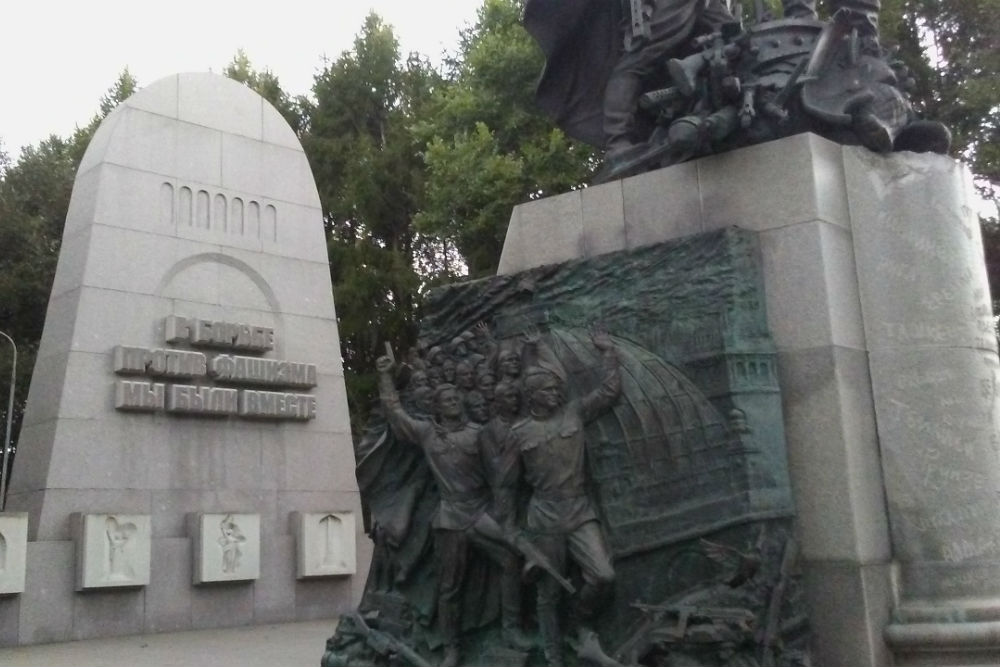
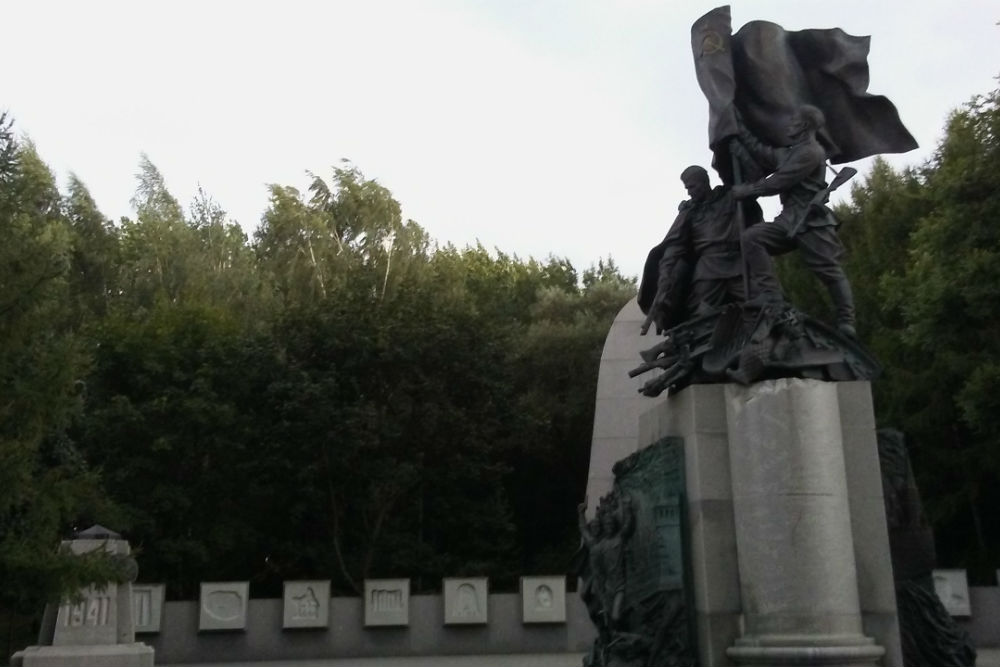
From this memorial, if you turn around and go in the opposite direction, it will lead you to the Monument to the Spanish Volunteers and their cooperation with the Soviet Union during the Spanish Civil War and beyond it: the Memorial Synagogue. It is a House of Worship, but it is also in part a museum. It stands as a memory to the atrocities committed against Jews by Nazi Germany.
If desired, after the Memorial Synagogue you can continue walking past it towards one corner of the park. Here you will find four more memorials. First, the Foundation Stone for the new Buddhist Memorial Temple in construction, seconldy a Soviet Tank BMD-1 (figure 15) commemorating the Russian paratroopers. Third, a monument to the Soldiers Internationalists (figure 13), and finally along the main road a memorial to the Homeland Defenders (figure 14).
Photo Gallery (figures 12-15):
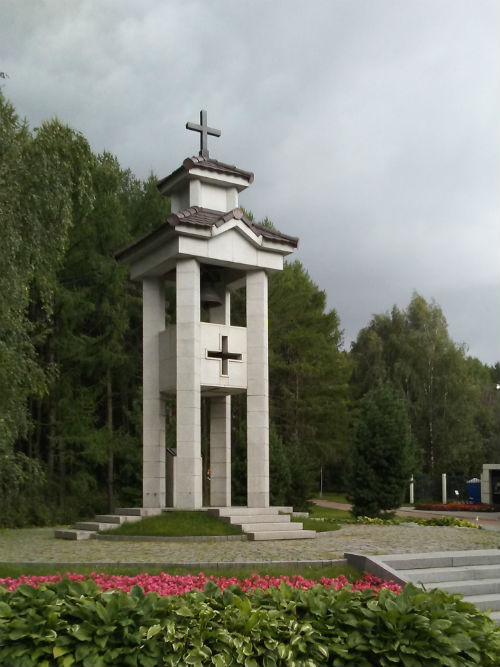
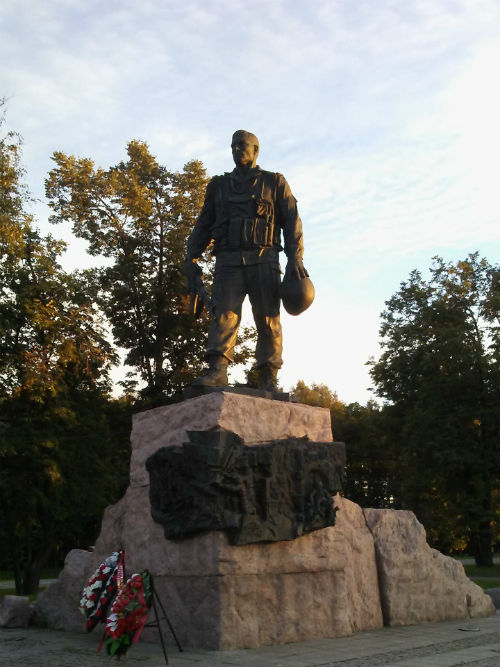
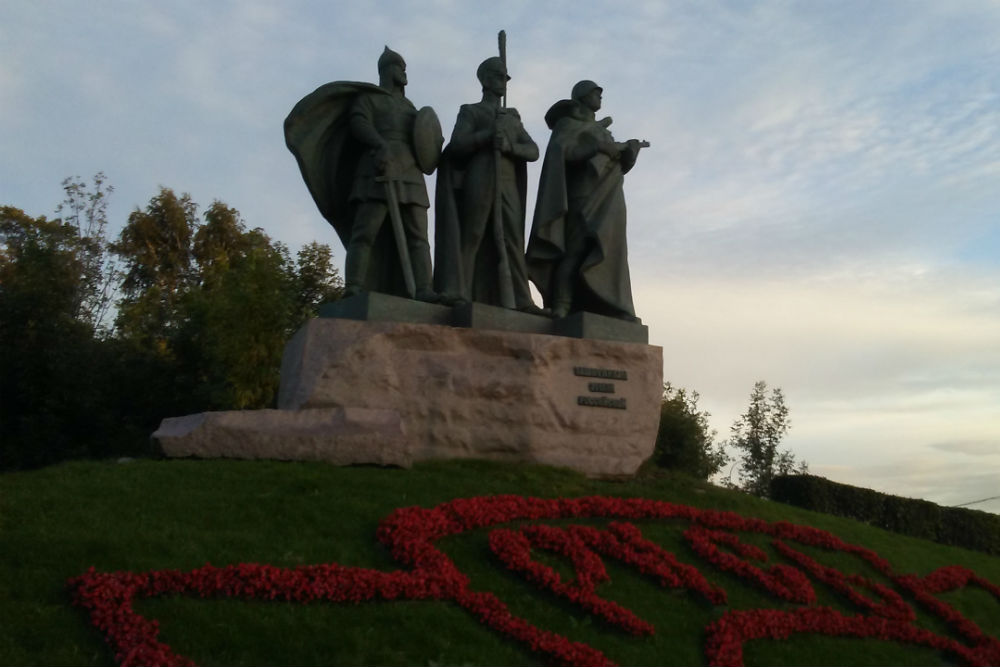
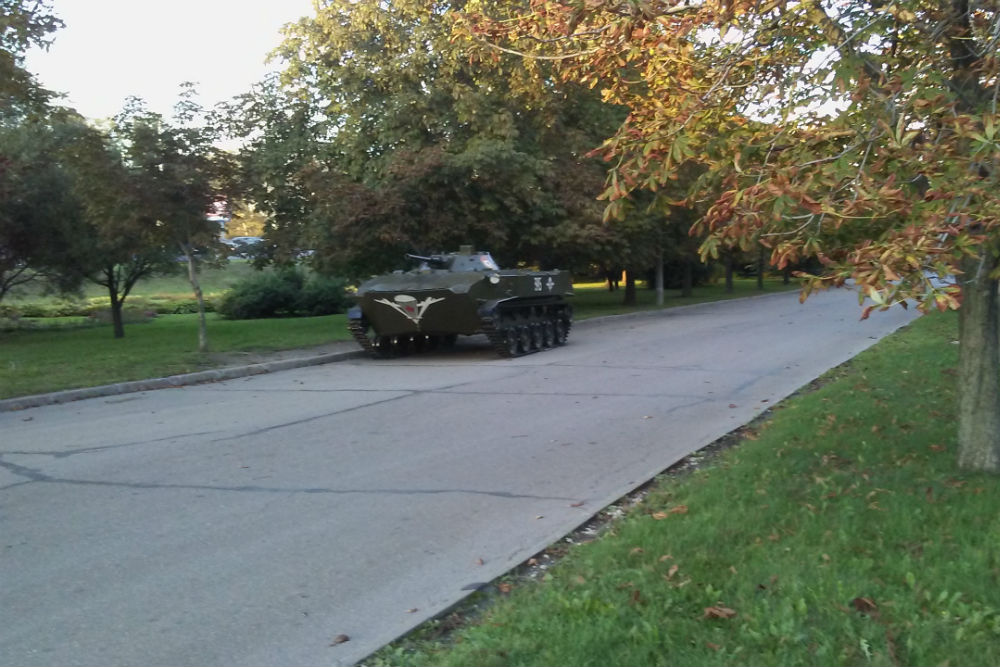
Whether or not you took a right to visit these three memorials, our path will lead us now back past the Spanish Monument and the Soviet Republics monument up the road. We are now heading towards the Open-Air Exhibit of World War II military equipment. It includes tanks, airplanes, anti-aircraft, submarines, torpedoes, re-created bunkers, and more.
As we walk towards we will pass another memorial to the soldiers who were wounded and killed in the war.
Once arriving by metro, we will begin the walk by going straight to the Memorial Obelisk standing tall. As you walk from the metro station towards the top of Poklonnaya Hill on the left-hand side you will see the World War I memorial. It is two-fold with a soldier’s statue on one side, and alongside it a sculptured photo of cavalry troops riding into battle (image 2).
Include a gallery of photos (figures 4-7):




Once you continue past the First World War memorial begin walking up the steps. The walk up towards the obelisk follows the war period beginning in 1941 through 1945 symbolized by stones along the path and the fountains along the side (see Figure 4). On your left-hand side fifteen gold pillars stand strong, placed there in 2005 by President Putin. Each symbolizes different parts of the war effort in the Soviet Union (Figure 6). On your right-hand side, the landscape is filled with fountains (Figure 7).
On May 9, 1995 St. George’s statue prevailing over the evil snake was inaugurated as a Memorial to Victory. You should have reached it by now, if you have been walking along the main path with me. It is in the foreground of the imposing obelisk. The obelisk has inscriptions and drawings alongside it, including mainly the names of the main Soviet cities where the Great Patriotic War was fought. Usually, the stairs are open to walk up along the sides of St. George and admire the memorial.


On the back side of the obelisk lies the Central Great Patriotic War Museum. It stands surrounding the memorial in a semi-circle of white columns. The entrance is located right behind the eternal flame. The museum tracks the story of the Soviet Union war against Hitler’s invading armies from 1941 till 1945. Their main exhibits are four panoramic dioramas, or 3-D art displays. It is a museum worth seeing if interested in the war from the Russian perspective.
The path we just took represents the main road and the key part of the memorial at Victory Park. Please enter the museum if you are interested in the topic. Next, we will turn to the right of the museum to the memorial "The tragedy of peoples." It stands as a semi-circle of people who stand completely naked. As you continue along the line they start falling on top of each other. It stands as a reminder of the horrors and crimes of the war.

After this memorial, continue walking around the museum to the back side. Here is the Memorial to the anti-Hitler Coalition. The monument is of four soldiers, seemingly of different nationalities based on their weapons. Most likely there is a French, British, US, and Soviet soldier standing together.
IF limited on time, skip to the Open-Air Exhibit, you will find it by taking a left turn and continuing to the other side of the Great Patriotic War Museum. It is also located with a pin on a larger map.
Otherwise, lets continue walking away from the museum along the path. At the next intersection, turn left and you will run into a plaque and memorial reading: “In the struggle against Fascism, We stood Together.” It commemorates all the Soviet republics in their war against Nazi Germany. In front of the plaque are Soviet soldiers raising their flag while stomping the Nazi Eagle.
Gallery:


From this memorial, if you turn around and go in the opposite direction, it will lead you to the Monument to the Spanish Volunteers and their cooperation with the Soviet Union during the Spanish Civil War and beyond it: the Memorial Synagogue. It is a House of Worship, but it is also in part a museum. It stands as a memory to the atrocities committed against Jews by Nazi Germany.
If desired, after the Memorial Synagogue you can continue walking past it towards one corner of the park. Here you will find four more memorials. First, the Foundation Stone for the new Buddhist Memorial Temple in construction, seconldy a Soviet Tank BMD-1 (figure 15) commemorating the Russian paratroopers. Third, a monument to the Soldiers Internationalists (figure 13), and finally along the main road a memorial to the Homeland Defenders (figure 14).
Photo Gallery (figures 12-15):




Whether or not you took a right to visit these three memorials, our path will lead us now back past the Spanish Monument and the Soviet Republics monument up the road. We are now heading towards the Open-Air Exhibit of World War II military equipment. It includes tanks, airplanes, anti-aircraft, submarines, torpedoes, re-created bunkers, and more.
As we walk towards we will pass another memorial to the soldiers who were wounded and killed in the war.
Open Air Exhibit – The War Weaponry and Fortification
Once you see the wounded soldier, you will have the hill on your left side. Take a right and follow the path down towards the exhibit. The exhibit as mentioned before has a lot of military equipment from the Soviet side and the German side. Unfortunately, a lot of the museum is in Russian.
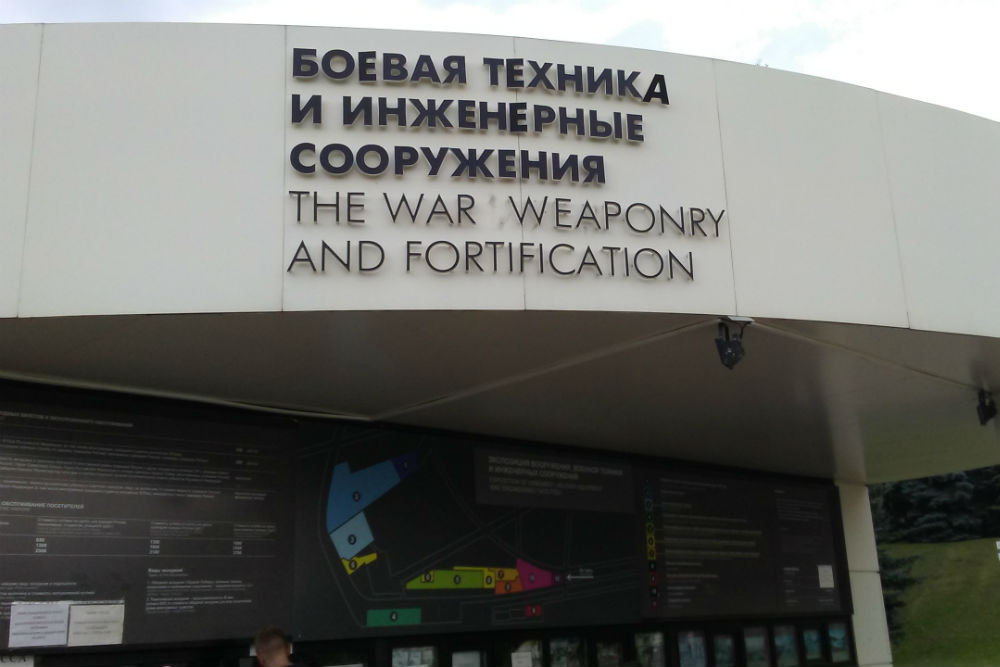
Here are a few photos of the equipment that can be seen:
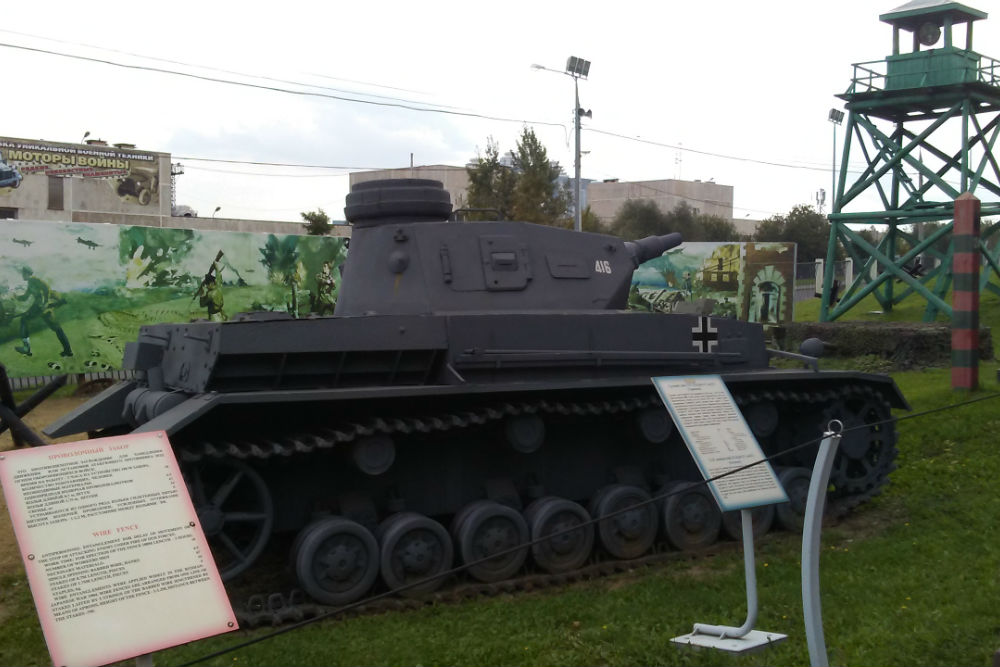
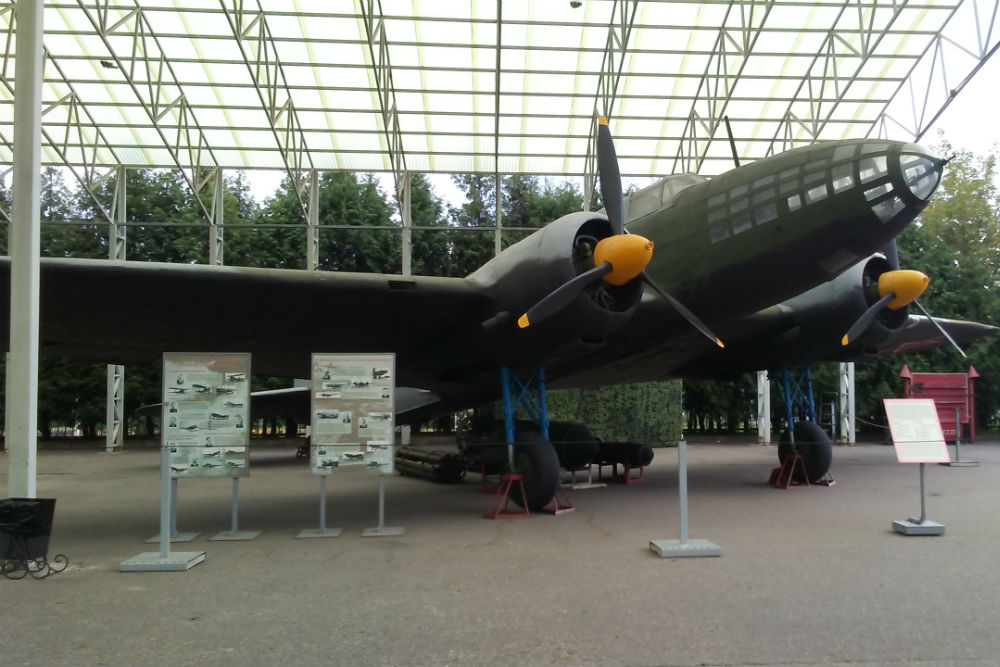
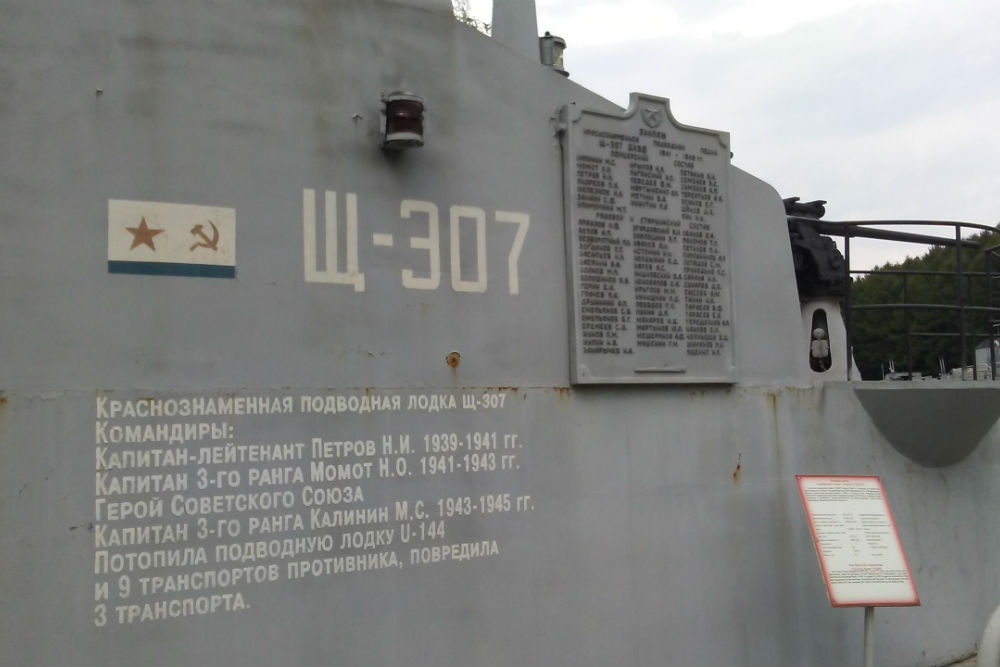
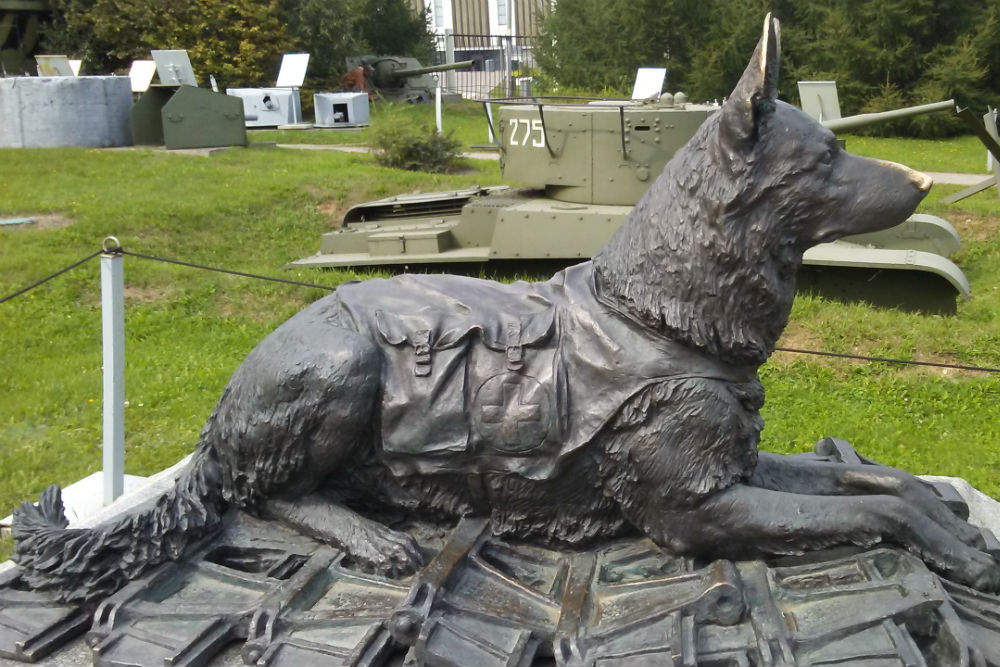
Extended Visit – Additional Memorials
If interested and there is time the park still has a few other sights to see:
1. St. George’s Memorial Church
2. Memorial Mosque
3. Memorial in honor of the Cities of Military Glory
4. Modern Aircraft Open-Air Exhibit
These are found on the map provided above.
Part II: 1812 War against the French
If you are interested in the 1812 War. Once you exit the Metro Station turn in the opposite direction of the park. You will immediately see the Arc de Triumph in the middle of the street. The arc symbolizes the triumph over the French.
If you continue to the other side of the road, you will find the “Museum-Panorama, The Battle of Borodino.” It is the most important battle of the war against the French and is presented in this main museum. Furthermore, right outside is a statue and square in commemoration of the general who led the Russians during the battle.
Written by: John Shorack
Once you see the wounded soldier, you will have the hill on your left side. Take a right and follow the path down towards the exhibit. The exhibit as mentioned before has a lot of military equipment from the Soviet side and the German side. Unfortunately, a lot of the museum is in Russian.

Here are a few photos of the equipment that can be seen:




Extended Visit – Additional Memorials
If interested and there is time the park still has a few other sights to see:
1. St. George’s Memorial Church
2. Memorial Mosque
3. Memorial in honor of the Cities of Military Glory
4. Modern Aircraft Open-Air Exhibit
These are found on the map provided above.
Part II: 1812 War against the French
If you are interested in the 1812 War. Once you exit the Metro Station turn in the opposite direction of the park. You will immediately see the Arc de Triumph in the middle of the street. The arc symbolizes the triumph over the French.
If you continue to the other side of the road, you will find the “Museum-Panorama, The Battle of Borodino.” It is the most important battle of the war against the French and is presented in this main museum. Furthermore, right outside is a statue and square in commemoration of the general who led the Russians during the battle.
Written by: John Shorack
